Continuum Near Eastern History Collection (13 vols.)
Digital Logos Edition
Overview
The message of the Bible is not bound by time or place. Nevertheless, understanding the cultural context of the times and places in which the Bible was written is vital for understanding and applying its meaning for today. The 13-volume Continuum Near Eastern History Collection examines the cultural context of the Old Testament, with contributions from over one hundred of today’s top archaeologists, textual scholars, scholars of Jewish and Christian history, and Dead Sea Scrolls scholars.
This collection provides vital background and contextual details for the Old Testament Scriptures. A thorough study of Asherah helps modern readers comprehend the extent of Israel’s descent into idolatry, and the urgency of God’s warnings against worshiping false gods. Detailed examinations of slavery help modern readers comprehend a thorny biblical issue and understand the debt-slavery texts in the Pentateuch. Interdisciplinary studies illuminate the development of economies, the emergence of city-states, the raising of armies, and the cross-cultural connections between the Persian Empire, the Greek world, and the cultures—such as Israel—which lay in between. Scholars also explore the origin and growth of urban culture, the role of cultural elites, the rise of writing and literacy in the ancient world, and many other topics.
The Continuum Near Eastern History Collection is a massive collection of eight monographs, plus five collections of articles and other focused studies—over 100 total. Contributors include archaeologists, textual scholars, scholars of Jewish and Christian history, Dead Sea Scrolls scholars, and more.
With the Logos Bible Software edition, all Scripture references are linked to the original language texts and the Bibles in your library. By employing the advanced search features in Logos, you can find the exact topics or passages you’re looking for. Whether you are encountering the cultural context of the Bible for the first time, or you’re working on advanced archaeological, historical, or textual research, the Logos Bible Software edition is right for you.

- Eight book-length studies, and over 100 shorter studies
- Contributions from archaeologists, textual scholars, scholars of Jewish and Christian history, Dead Sea Scrolls scholars, and more
- All Scripture passages linked to the Bibles in your library
- The newly published second and third series of William Robertson Smith’s Lectures on the Religion of the Semites
- All Scripture passages are linked to the original language texts and English translations in your library
- Title: Continuum Near Eastern History Collection
- Publisher: T & T Clark International/Sheffield Academic Press
- Volumes: 13
- Pages: 3,914
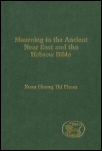
Commentators are often disturbed by the presence of various speakers in the three poems of Lamentations 1 and 2, and Isaiah 51.9-52.2, the change of speakers being thought to disrupt the flow of ideas. This study shows that a close reading of all three poems in the light of their mourning ceremony setting displays a clear and consistent flow of thought. Purported cases of 'disruption' now fit into their present context as moments in which different mourners voice their pains and their questions aloud, and bring their incomprehensible sufferings to Yahweh their God and the creator of all.
Xuan Huong Thi Pham is Translation Consultant of the NIDA Institute of Biblical Scholarship at the American Bible Society, Chantilly, Virginia.
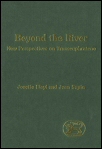
Here is a blueprint for a new interdisciplinary approach that decompartmentalizes disciplines for the study of this district of the Achaemenid Empire including Syria, Phoenicia, Palestine and Cyprus. Remarkable cultural evolutions and changes in this area need closer study: the introduction of coinage and the coin economy, the sources of tension over problems of power and identity, the emergence of city-states similar to the Greek city type, the development of mercenary armies, the opening up of the Western fringe of the Persian Empire to the Greek world. Completely new research initiatives can extensively modify the vision that classical and oriental specialists have traditionally formed of the history of the Persian Empire.
Josette Elayi is Chargée de recherche at the Centre National de la Recherche Scientifique and editor of Transeuphratène.
Jean Sapin is Chargé de recherche at the Centre National de la Recherche Scientifique and editor of Transeuphratène.
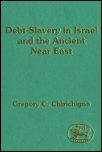
This original study concerns itself with the manumission laws of Exodus 20, Deuteronomy 15, and Leviticus 25. It begins with the social background to debt slavery and the socioeconomic factors encouraging the rise of debt slavery in Mesopotamia. After a comparative analysis of the Mesopotamian and biblical material Chirichigno examines the social background to debt slavery in Israel, the various slave laws in the Pentateuch (in order to delimit the chattel-slave laws from the debt-slave laws), and the biblical manumission laws themselves.
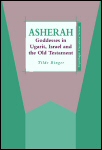
This volume contains a comprehensive discussion of texts concerning the goddess Asherah, as she is portrayed in texts from Ugarit (both epic and ritual texts, as well as the lists of sacrifices), Israel (the Khirbet el-Qom and Kuntillet Ajrud inscriptions) and the Old Testament. The main theses of the book are that two or more divinities carrying the same name but separated by several hundred years are not necessarily to be identified; that Asherah is probably not a name, but rather a title, carried by the main goddess in ancient Syria-Palestine; that the Asherah of the Old Testament and the Israelite texts was indeed the consort of Yahweh; and that the relationship between the text-groups discussed is of a nature that demands great caution, if one wishes to work comparatively with them.
Tilde Binger lectures at the University of Copenhagen.
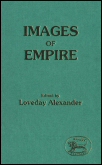
At the Images of Empire colloquium held in Sheffield in 1990, an international team of scholars met to explore some of the conflicting images generated by the Roman Empire. The articles reflect interests as diverse as those of the scholars themselves: Roman history and archaeology, Jewish Studies, Dead Sea Scrolls, New Testament and Patristics are all represented. All are focused on a single theme, the importance of which is increasingly recognized, not only for the historian, but for everyone interested in the political complexities of our post-imperial world.
Contributions to this volume include:
- "Urbs Roma, Plebs and Princeps," Miriam Griffin
- "The Economic Critique of Rome in Revelation 18," Richard Bauckham
- "Images—or Mirages—of Empire? An Archaeological Approach to the Problem," Keith Branigan
- "Calgacus: Clash of Roman and Native," D.J. Mosley
- "Friends, Romans, Subjects: Agrippa II’s Speech in Josephus’s Jewish War," Tessa Rajak
- "The Kittim in the Qumran Pesharim," George J. Brooke
- "Daniel in the Lions’ Den," Philip R. Davies
- "Surviving the Web of Roman Power: Religion and Politics in the Acts of the Apostles, Josephus, and Chariton’s Chaereas and Callirhoe," Douglas R. Edwards
- "Luke–Acts: A Mixed Population Seeks a Home in the Roman Empire," Vernon K. Robbins
- "Opponents of Rome: Jews and Others," Martin Goodman
- "Jerome’s Concepts of Empire," Steven Fanning
- "Let Every Soul Be Subject: The Fathers and the Empire," Gillian Clark
- "The Family of Caesar and the Family of God: The Image of the Emperor and the Heikhalot Literature," Philip S. Alexander
Loveday Alexander is a Professor of Biblical Studies at the University of Sheffield and a Canon-Theologian of Chester Cathedral. Since training as a classicist at Somerville College, Oxford, she has been exploring the interface between the classical world and the world of the New Testament.
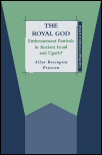
In this volume, Allan Rosengren Petersen tests Sigmund Mowinckel's classical hypothesis about the enthronement festival of Yahweh and especially whether this theory, as urged by the followers of Mowinckel, finds any support in the epic literature of Ugarit. A careful study of the two corpora of texts, the Old Testament Psalms and the Ugaritic Baal-cycle, together with a discussion of the methodology of the cultic interpretation, shows the weaknesses of the hypothesis. In the history of scholarship, the idea of an enthronement festival of Marduk has been arbitrarily transferred from Babylon to Jerusalem and hence to Ugarit with little basis in the relevant texts. In fact, the method of 'cultic interpretation' is to be rejected, since its circularity of argumentation determines the result of the analysis beforehand.
Allan Rosengren Petersen is at the University of Copenhagen, Denmark.
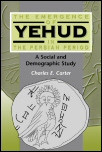
The Emergence of Yehud in the Persian Period is a long-awaited and much-needed comprehensive analysis of the material evidence concerning Persian-period Judah. Carter analyses the settlement pattern and population distribution of the province, using both excavations and archaeological surveys. His meticulous examination arrives at a rather low estimate of the population during this period, on the basis of which he examines Yehud's socio-economic setting and considers the implications of a small Yehud for some of the prominent theories concerning the province in the Persian-period.
Charles Carter is Associate Professor of Religious Studies, Seton Hall University, New Jersey.
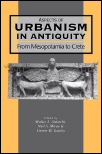
The origin and growth of cities forms one of the most important chapters in human history. In this volume, seventeen researchers present archaeological, epigraphic and textual data on the rise of urbanism in the ancient Near Eastern world, Cyprus to Mesopotamia and from Crete to Egypt. Topics addressed include the influence of agriculture intensification, of trade, of craft specialization and of writing on the rise of cities. The roles of cultural elites, of ideologies and of relations between proximal urban centers are also examined. The contributors to this volume include such well-known scholars as William Dever and Donald Redford.
Contributions to this volume include:
- "Spatial Perspectives on Early Urban Development in Mesopotamia," E.B. Banning
- "Writing as a Factor in the Rise of Urbanism," Ronald F.G. Sweet
- "Urbanisation et ‘redistribution’ de surplus agricoles en Mesopotamie septentrionale (3000–2500 av. J.-C.)," Michel Fortin
- "Craft Specialization and the Rise of Secondary Urbanism: A View from the Southern Levant," Steven A. Rosen
- "The Agricultural Base of Urbanism in the Early Bronze II–III Levant," Arlene Miller Rosen
- "The Social Context of Early Iron Working in the Levant," Neil A. Mirau
- "Urbanization and Northwest Semitic Inscriptions of the Late Bronze and Iron Ages," Walter E. Aufrecht
- "Learning to Love the King: Urbanism and the State in Iron Age Moab," Bruce Routledge
- "Urbanism at Tell el-‘Umeiri during the Late Bronze IIB–Iron IA Transition," Larry G. Herr
- "Tell Jawa: A Case Study of Ammonite Urbanism during Iron Age II," P.M. Michele Daviau
- "The Urban Center of Jerusalem and the Development of the Literature of the Hebrew Bible," Ehud Ben Zvi
- "The Ancient Egyptian ‘City’: Figment or Reality?" Donald B. Redford
- "Temple as the Center in Ancient Egyptian Urbanism," Carolyn Routledge
- "'Metro' Nea Paphos: Suburban Sprawl in Southwestern Cyprus in the Hellenistic and Earlier Roman Periods," David W. Rupp
- "Palace-Centered Politics in Eastern Crete: Neopalatial Petras and its Neighbors," Metaxia Tsipopoulou
- "A View from the Outskirts: Realignments from Modern to Postmodern in the Archaeological Study of Urbanism," D. Bruce MacKay
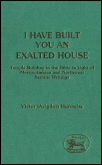
This close synchronic analysis of Exodus 1–2 looks at how the pericope's structure, language, focalization and management of information form its conception and judgment of its events and characters. A coherence of concerns is detectable in Exodus 1–2 with allusions to Genesis and the later chapters of Exodus. One chapter is assigned to each of seven narrative unities and deals in various ways with its narrative problems. The resulting eclectic choice of analytical tools includes the study of Proppian structural functions, repetition, public rhetoric, narrative speeds, order and symbolism.
Victor Hurowitz is a member of the Department of Bible and Ancient Near Eastern Studies at Ben-Gurion University.
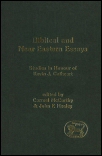
This collection of essays contains a wide range of topics reflecting the depth and breadth of interest of the scholar in whose honor they were commissioned—Kevin J. Cathcart. The central focus is Near Eastern, and covers a range of philological, linguistic, exegetical, historical and interpretative issues. The Near Eastern languages examined include Akkadian, Arabic, Aramaic, Ethiopic, Hebrew, Septuagintal Greek, Syriac and Ugaritic, while exegetical and text-critical topics include treatments of issues in Deuteronomy, 1 Kings, Isaiah, Amos, Psalms and the Song of Songs. Hermeneutical and historical essays touch on Ancient Israel's history and its interpretation, as well as on the significance of such individuals as the consular official John Dickson, E.H. Palmer in the Cambridge Libraries, William Lithgow of Lanark, and the contribution to Semitic epigraphy of the explorer Julius Euting.
Contributions to this volume include:
- "Does the Old Testament Refer to Sacred Prostitution and Did it Actually Exist in Ancient Israel?," John Day
- "The Ideological Foe: The Philistines in the Old Testament," Robert P. Gordon
- "The Finale of the Davidic Succession Narrative?," Henry Wansbrough
- "The Formation of Isaiah 2.6–22," H.G.M. Williamson
- "The Day of Yahweh in the Minor Prophets," John Barton
- "The ‘Four Servant Poems’ in Second Isaiah in the Light of Recent Redaction-Historical Studies," Charles Conroy
- "Some Problems in Psalm 88.16," John A. Emerton
- "'The Lord God has Spoken, And Who Will Not Prophesy?' From Osee to Jonas in the Septuagint," Knud Jeppesen
- "Samaritan Pentateuch Readings in Deuteronomy," Carmel McCarthy
- "A Neglected Revision of the Peshitta Psalter," Sebastian P. Brock
- "Wisdom, Torah and Creation in Targumic Literature," Celine Mangan
- "The Colophon of Codex Neofiti I: The Scribe Menahem and the Roman Medical Family of Manuele," Martin McNamara
- "Marx, Weber and the Religion of Ancient Israel," Andrew D.H. Mayes
- "Between Scylla and Charybdis: The Problem of Israelite Historiography," John R. Bartlett
- "The Politics of Biblical Interpretation," John J. Collins
- "Dahood’s Commentary on the Psalms: A Review of an Academic Grandparent’s Work after Thirty Years," Gerard J. Norton
- "'A Lily among Thorns,': Canticles 2.2 in the Latin Exegetical Tradition," Michael Maher
- "Akkadian Loanwords in Ugaritic: The Hippiatric Texts," Wilfred G.E. Watson
- "Ethiopian Names in Sabaic and the Question of matres lectionis in Epigraphic South Arabian," Manfred Kropp
- "Classical Arabic Pattern fa’ali Revisited," G. Rex Smith
- "Foot-Soldiers of the Byzantines or Spies for the Muslims? The Role of the Samaritans in the Muslim Conquest of Palestine," Reinhard Pummer
- "William Lithgow of Lanark’s Travels in Hunary, Transylvania and Poland, 1616," C. Edmund Bosworth
- "'Sicherheit des Auges': The Contribution to Semitic Epigraphy of the Explorer Julius Eutin (1839–1913)," John F. Healey
- "Fresh Evidence on E.H. Palmer’s Travels from Cambridge Libraries," Graham I. Davies
- "A Late-Victorian Consul in the Near East: John Dickson (1846–1906)," David W. Morray
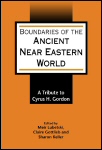
For over sixty years Cyrus H. Gordon's scholarship and teaching have provided new directions to the study of the ancient Near East. This collection of 34 essays in honor of his 90th birthday, edited by three of his former pupils, celebrates his fascinating and remarkable achievements and reflects his broad command of ancient studies. The global impact of his research can be seen from the geographical dispersion of the outstanding scholars who have written here on the following topics: archaeology, Bible studies, Ugaritic, Aramaic, Arabic, Egypto-Semitic, the cuneiform world, Indo-European, Samaritan, the Graeco-Roman world, and mediaeval studies. The inclusion of a complete bibliography of Gordon's works is of singular value.
Contributions to this volume include:
- "Fumes, Flames or Fluids? Reframing the Cup-and-Bowl Question," Carol Meyers
- "Some Remarks on Shipbuilding Heritage and Ancient Peoples," Avner Raban
- "Collectives of the Q’tul Formation," Constance W. Gordon
- "The Literary Treatment of Nature in Psalms," Daniel Grossberg
- "Human and Divine Wisdom in the Book of Job," Mayer I. Gruber
- "Is the Book of Nehemiah a Translation from Aramaic?," David Marcus
- "Build-Up and Climax in Jeremiah’s Vision and Laments," Esther H. Roshwalb
- "The Northern Israelite Queen Mother in the Judaean Court: Athalia and Abi," Ktziah Spanier
- "Fragments of a Deuteronomy Scroll from Masada: Deuteronomy 33.17–34.6 (1043/A-D)," Shemaryahu Talmon
- "A Ritual for the Country’s Salvation, KTU 1.162: A Reappraisal," G. Del Olmo Lete
- "'Sieha, da war er (wieder) munter!' Die mythologische Begrundung fur eine medikamentose Behandlung in KTU 1.114 (RS 24.258)," Manfried Dietrich and Oswald Loretz
- "Adam, Edom and Holocaust," Marvin A. Pope
- "The Phoenician-Punic Menology," Robert R. Stieglitz
- "New Documents from the Dead Sea: Babylonian Science in Aramaic," Mark J. Geller
- "The Revised Draft of the Letter of Jedaniah to Bagavahya," Bezalel Porten
- "Notices on Pe’ah, Fay’ and Feudum," Alauddin Samarrai
- "Making Peace in Heaven and on Earth: Religious and Legal Aspects of the Treaty between Ramesses II and Hattusili III," Ogden Goelet, Jr. and Baruch A. Levine
- "The Egyptian Background to Isaiah 19.18," Sarah Israelit-Groll
- "Once again the ‘Plumb Line’ Vision of Amos 7.7–9: An Interpretive Clue from Egypt?," James K. Hoffmeier
- "Ancient Israel as the Land of Exile and the ‘Otherworld’ in Ancient Egyptian Folktales and Narratives," Susan Tower Hollis
- "An Egyptian Analogue to the Priestly Blessing," Sharon R. Keller
- "Biblical Instructional Wisdom: The Decisive Voice of the Ancient Near East," Kenneth A. Kitchen
- "Isaiah 18: The Egyptian Nexus," Meir Lubetski and Claire Gottlieb
- "Two Heads for the King of Ebla," Alfonso Archi
- "Two Letter-Prayers to Amurru," William W. Hallo
- "Mari and its Relations with the Eastern Mediterranean," Avraham Malamat
- "Qumran, Samaritan Halakha and Theology and Pre-Tannaaitic Judaism," Alan D. Crown
- "Zion or Gerizim? The Association of Abraham and the Aqeda with Zion/Gerizim in Jewish and Samaritan Sources," Isaac Kalimi
- "The Home of the Indo-Europeans," Giuliano Bonfante
- "Consonantal Apophony in Indo-European Animal Names," Roger Williams Wescott
- "Livy and the Monuments," Larissa Bonfante
- "Matauitatau in Petronius, Satyricon 62.9: Crux Interpretum," Howard Marblestone
- "The Influence of Hebrew on Portuguese," Alan D. Corre
- "Traditional Commentators Anticipating a Modern Literary Approach," Walter Herzberg
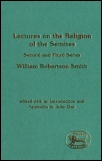
The outstanding nineteenth-century biblical scholar and Semitist William Robertson Smith gave three courses of Burnett Lectures on the Religion of the Semites at Aberdeen just over a century ago. The first series, published in 1889 (2nd edition, 1894), has long been a classic work. The second and third series were never published, owing to the author's ill health; however, the manuscript of them still exists in the Cambridge University Library and was recently discovered by John Day, who has produced this edited version of the work to commemorate the centenary of Smith's death. The lectures, which constitute a work of considerable Semitic and Classical learning, are on the following subjects: Feasts, Priests and the Priestly Oracle, Prophecy and Divination, Semitic Polytheism and Cosmogony. Dr Day has written an Introduction, which evaluates the work and includes nineteenth-century press reports of the Lectures.
William Robertson Smith was an important scholar of the Old Testament and professor of Arabic at the University of Cambridge. He died in 1894.
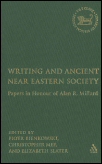
This book honors the significant and enduring work of Old Testament scholar Alan Millard. The contributors to this festschrift take up all of his concerns with the relationship between writing, the development and Israel, and ancient Near Eastern society.
Contributions to this volume include:
- "Migraines d’Epigraphiste," Pierre Bordreuil
- "Taima and Nabonidus: It’s a Small World," Alasdair Livingstone
- "Dresser le boeuf a Ougarit," Dennis Pardee
- "Literacy in an Oral Environment," M.C.A. MacDonald
- "Keilschrift versus Alphabetschrift: Uberlegungen zu den epigraphs auf Keilschrifttafeln," Wolfgang Rollig
- "The Writing on the Wall: Law in Aramaic Epigraphy," John F. Healey
- "'Misspellings' in Cuneiform Alphabetic Texts from Ugarit: Some Cases of Loss or Addition of Signs," David T. Tsumura
- "Some Uses of Writing in Ancient Israel in the Light of Recently Published Inscriptions," Graham Davies
- "Now You See It, Now You Don’t! The Monumental Use and Non-use of Writing in the Ancient Near East," K.A. Kitchen
- "What has Delphi to do with Samaria? Ambiguity and Delusion in Israelite Prophecy," Daniel I. Block
- "Darius’ Accession in (the) Media," Christopher Tuplin
- "'Hazael, Son of a Nobody': Some Reflections in Light of Recent Study," K. Lawson Younger
- "4Q341: An Exercise for Spelling and for Spells?," George J. Brooke
- "The Origins of the Inscribed Greek Stela," John Davies
- "Only Fragments from the Past: The Role of Accident in our Knowledge of the Ancient Near East," Alan Millard
E.A. Slater is Professor of Archaeology, University of Liverpool.
C.B. Mee is Professor of Aegean Archaeology, University of Liverpool.
Piotr Bienkowski is Head of Collections and Academic Development, Manchester Museum, University of Manchester.